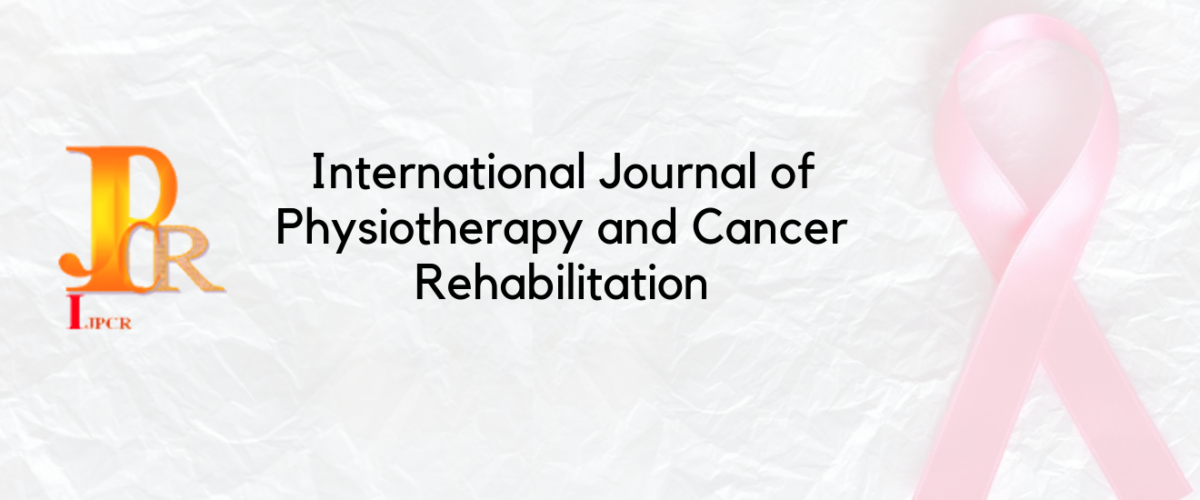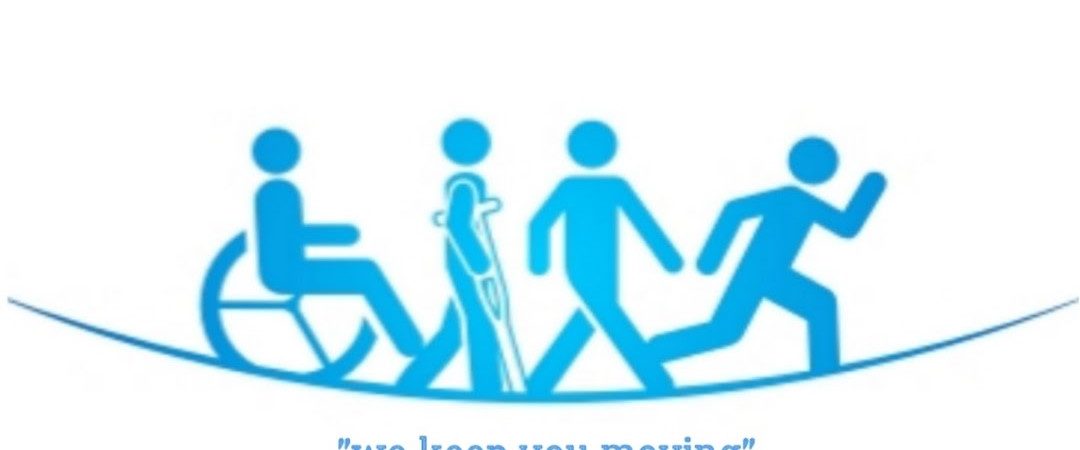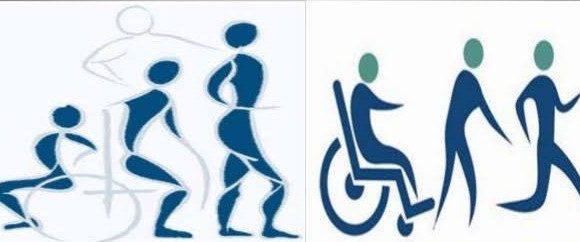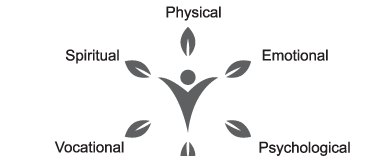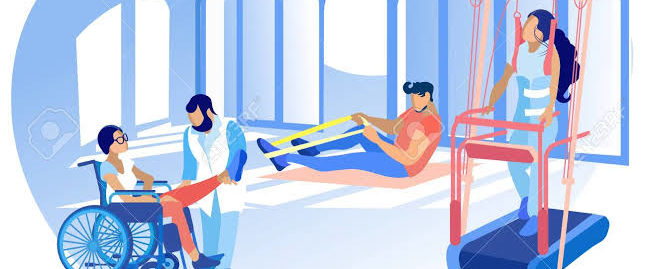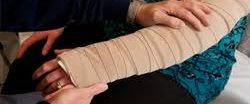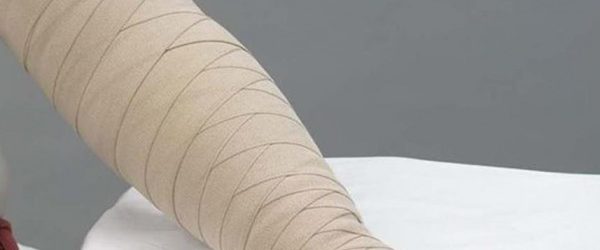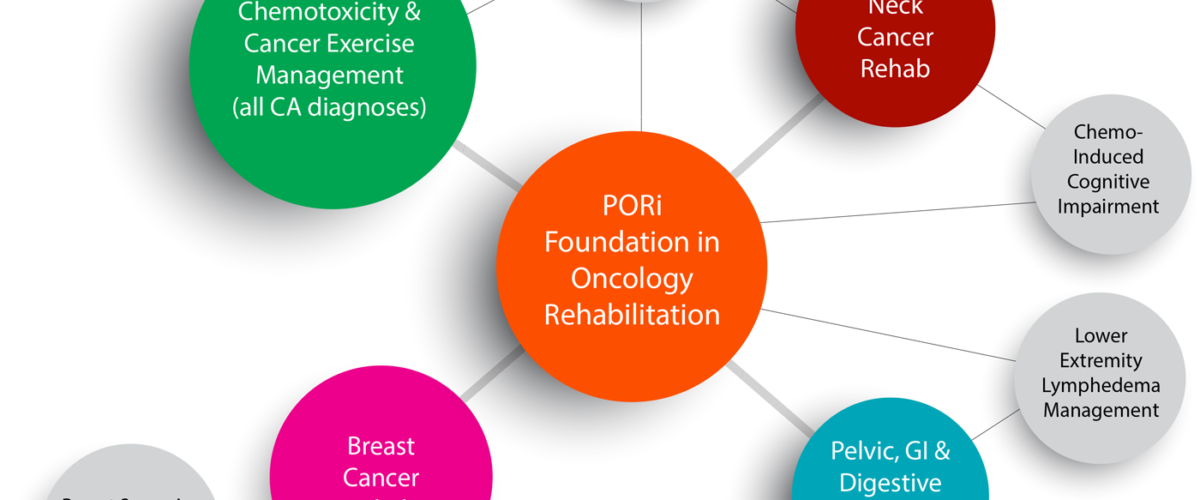TO COMPARE THE EFFECT OF MAT EXERCISE AND GYM BALL EXERCISES REGIMENS ON TRUNK CONTROL AND FUNCTIONAL BALANCE IN PATIENTS WITH CHRONIC STROKE – Pritesh Prajapat Shailendra Mehta
TO COMPARE THE EFFECT OF MAT EXERCISE AND GYM BALL EXERCISES REGIMENS ON TRUNK CONTROL AND FUNCTIONAL BALANCE IN PATIENTS WITH CHRONIC STROKE
Pritesh Prajapat Shailendra Mehta
INTRODUCTION
Stroke is the most common life threatening neurological disease. According to WORLD HEART FEDERATION every year 15 million people worldwide suffer from stroke, nearly 6 million die and 5 million left disabled. About 1.2% of deaths in India are due to stroke, the incidence is 105 per 1 lakh population in urban community and 262 per lakh in rural community.1 Among the non communicable diseases stroke contributes for 41% of deaths and 72% of disability as estimated by Indian council of medical research. Common problems after stroke are impaired motor functions including balance and gait disturbances.2 The trunk being the central key point of the body, proximal trunk control is a pre requisite for distal limb movement control, balance and functional activities.3
NEED OF THE STUDY
Various studies have demonstrated the effects of therapeutic approaches used after stroke for example neurophysiologic, motor learning, strengthening exercises of limb muscles etc. But the evidence supporting the effectiveness of trunk rehabilitation and balance training is scarce.
AIM OF THE STUDY
The aim of the study was to investigate the comparative efficacy of the two interventions mentioned above in improving trunk control and functional balance using the Berg balance scale and Trunk control test, respectively.
OBJECTIVE OF THE STUDY
The objective of the study was to determine whether exercises performed on a physio ball are more beneficial than those performed on a mat for trunk control and functional balance in patients with chronic stroke.
METHODOLOGY AND MATERIAL USED
STUDY DESIGN – A comparative study
SAMPLE DESIGN – Convenient sampling
PLACE OF STUDY – Active life physiotherapy center.- Niyantaa physiotherapy clinic.
MATERIAL USED
- Gym ball
- Mat
- Pen.
- Camera
- Examination chart for trunk control
- Pencil
- Water bowl
- Water
- Exercise chart
- Mirror
- Pillow
- Hand gloves
INCLUSION CRITERIA
- Patient having stroke.
- Paralysis of time duration more than 2 month and less than 1 year.
- Patient who have paresis.
- Both genders will be included.
- Patient who have given consent prior to the study.
- All patients who have understand my verbal instruction.
- Follow the chart of instruction and exercise provided by me.
EXCLUSION CERITERIA
- Time duration less than 1 month and more than 1 year.
- Patient having vital instability.
- Patient having allergy to various material used in treatment.
- Psychological disturb patient.
- Age after 70 years.
OUTCOME MEASUREMENTS
Primary outcome measurements – Berg balance scale
Secondary outcome measurements – Trunk control test
PROCEDURE
30 patient of chronic stroke between age group of forty to sixty five years have chosen on the basic of convenient sampling method –Subjects were divided into group A and group B each consisting of 15 patients receiving the intervention for 3 months.
Group A – Mat exercises for 90days 5 days in a week
Group B– Physio ball exercises for 90days 5 days in a week
All exercise had performed in different position like prone lying, supine lying, siting. Each subject was assessed according to -Berg balance scale and -Trunk control test.
Follow up asymmetry at rest during active facial movement was assessed on
- Day 0 before starting the treatment.
- Day 45 during the treatment.
- Day 90 at the end of treatment.
GROUP- A
Total treatment time was around 60 minutes per session.
| 1. Bridging on mat | – 10 min. |
| 2. Unilateral bridging | – 10 min. |
| 3. Quadripod position | – 10 min. |
| 4. Kneeling | – 10 min. |
| 5. Half kneeling | – 10 min. |
| 6. Sitting without support | – 10 min |
GROUP – B
Total treatment time will be around 45 minutes per session.
SUPINE EXERCISE ON GYM BALL
-
- Bridging exercise on gym ball -5 min
- Unilateral bridging on gym ball – 5 min
- SITTING EXERCISE ON GYM BALL
| 1. Flexion –extension on trunk | -5 min. |
| 2. Lateral flexion on trunk | -5 min. |
| 3. Rotation of trunk | -5 min. |
| 4. Rotation of trunk right to left | -5 min. |
| 5. weight shift right to left | -5 min . |
| 6. Lateral reach exercise | -5 min. |
| 7. Sitting balance exercise | -5 min |
RESULTS
After screening of the 50 patients for study eligibility, a total of 30 patients were included for analysis, of whom 15 were in the control group (physio plinth) and 15 were in the experimental group (physio ball).Outcome measures between the experimental
Table 1 shows the comparison of scores for trunk control test between Group A and Group B.
Table 1
- BETWEEN GROUPS:
TRUNK CONTROL TEST (TCT):
| Group | Mean | N | SD | Std. Error Mean | Mean Diff | T | P | |
| TCT
PRE-TEST |
A
B |
45.67
53.13 |
15
15 |
13.431
9.716 |
3.468
2.509 |
7.46 | 1.745 | 0.092NS |
NSNon-significant difference
| Group | Mean | N | SD | Std. Error Mean | Mean Diff | T | P | |
| TCT
POST-TEST |
A
B |
64.53
68.27 |
15
15 |
10.120
9.445 |
2.613
2.439 |
3.74 | 1.045 | 0.3052NS |
NSNon-significant difference
Table 2 shows the comparison of scores for Berg Balance test between Group A and Group B.
Table 2
BETWEEN GROUPS:
BERG BALANCE SCALE (BBS):
| Group | Mean | N | SD | Std. Error Mean | Mean Diff | T | P | |
| BBS
PRE-TEST |
A
B |
23.87
22.73 |
15
15 |
6.523
3.918 |
1.684
1.012 |
1.14 | 0.5768 | 0.5687NS |
NSNon-significant difference
| Group | Mean | N | SD | Std. Error Mean | Mean Diff | T | P | |
| BBS
POST-TEST |
A
B |
34.47
31.40 |
15
15 |
7.210
5.409 |
1.862
1.397 |
3.07 | 1.318 | 0.1983NS |
NSNon-significant difference
Table 3 shows the mean differences between Group A and Group B for the scores of Trunk Control test and Berg Balance test.
Table 3
- MEAN IMPROVEMENT IN TCT AND BBS VALUES IN GROUPS:
| Group | N | Mean | Group | N | Mean | ||
| TCT
Pre-test to Post-test |
A
B |
15
15 |
18.86
15.14 |
BBS
Pre-test to Post-test |
A
B |
15
15 |
10.60
8.67 |
DISCUSSION
The aim of the study was to determine whether exercises performed on a physio ball are more beneficial than those are performed on a mat for trunk control and functional balance in patients with chronic stroke.
To the best of our knowledge, this study is the first of its kind using a physio ball, the dynamic treatment instrument for trunk rehabilitation in patients with acute stroke. Brunel Balance Assessment has been used for the first time as a functional balance outcome measure in an acute stroke intervention study.
A study on electromyography analysis observed that the anticipatory postural adjustment of trunk muscles activity is impaired in patients with stroke.28 Furthermore, there was a reduced recruitment of high threshold motor units of trunk muscles after stroke.9,10 These are, in fact, essential for reactive postural adjustments during external perturbation.29 The possible reason for better trunk control improvement in the experimental group may be that the movement of the physio ball beneath the patients provides a postural perturbation in a gravitational field to which the trunk muscles respond reactively in order to maintain the desired postural stability.
A study by Verheyden et al.18 found that 10 hours of additional trunk exercises along with regular physiotherapy improved the lateral flexion of trunk in patients with subacute stroke. In our study it was observed that difference in effect between the two interventions (trunk exercises on the physio ball vs. those on the plinth) was 1.47 for the dynamic sitting balance subscale, which may be compared with the observed mean difference of 2.22 between the two interventions (trunk exercises on the plinth as against regular physiotherapy) in the study done by Verheyden et al. Although the change score between the groups was slightly lower in
our study than indicated by earlier trunk research, a greater improvement (4.07) was observed in our experimental group (i.e. those who performed trunk exercises on the physio ball) than the improvement (3.47) observed in the experimental group (i.e. those who performed trunk exercises on the plinth) of the study undertaken by Verheyden et al. An interesting finding was the trunk rotation improvement (i.e. horizontal plane dynamic postural control) as measured by the coordination subscale of the Trunk Impairment Scale. Coordination of the trunk is the mobility over stability task which requires counter rotation between the upper and lower trunk.
Furthermore, the better weight shift ability towards the hemiplegic side is essential for coordination of the trunk, particularly for the lower trunk rotation.15,16 Clinical observation also suggests that the rotation of the lower part of the trunk is more difficult for stroke patients.11 Recent studies on posturographic analysis observed that stroke patients tend to avoid shifting their centre of pressure towards the hemiplegic side in sitting29 and standing.30
A study by Mudie et al.31 found that training the patient in the awareness of trunk position could improve weight symmetry in sitting after the early phase of the stroke. The probable reason for the significant trunk rotation improvement may be the improved weight shift ability with the physio ball training.
Furthermore, the trunk training performed on the plinth involves the same exercises as physio ball training, but the inadequacy of plinth training acting on coordination would only be due to lack of postural perturbation. The effect size index (2.2) for the coordination subscale of the Trunk Impairment Scale is in favour of the experimental group.
Another exciting finding of this study was that trunk exercises performed on the physio ball had a carry-over effect in improving functional balance such as standing and stepping. The greater effect size index observed in
the total Brunel Balance Assessment (1.3) and the stepping component of the Brunel Balance Assessment (1.2) support our study hypothesis.
Dean et al.31,32 demonstrated an improvement in standing balance following dynamic reaching tasks undertaken for objects beyond arm’s length when the patient was in the sitting position. Experts in the field of neurological rehabilitation have addressed the trunk as the central key point of the body.
The neurodevelopmental treatment principle states that the control of movement proceeds from proximal to distal body regions. Proximal stability of the trunk is a prerequisite for distal limb movement.15,16
Therefore, proximal trunk control improvement influences the functional balance involved in activities such as standing and stepping. A recent cross-sectional study by Verheyden et al.17 favours this hypothesis. In their study, there was a positive association found between trunk control and balance after an acute stroke.According to Tyson,34 people with acute stroke progressing from one level to another level is of clinical importance for the Brunel Balance Assessment. In our study, the physio ball group had advanced almost two levels more than the control group, and this may affirm a factual clinical importance for Brunel Balance Assessment. Patients with acute stroke treated with the physio ball were able to walk 5m without an aid in one minute, which means they could change the base of support between double and single stance. The reason for the significant stepping balance improvement using the physio ball intervention may be an improvement in lower trunk muscle control which is essential for the stabilization of the pelvis. If an improved level of proximal pelvic stability is attained, a better distal lower extremity mobility might be anticipated, such as that involved in stepping balance.A study involving analysis of trunk kinematics in stroke subjects found unstable and asymmetrical pelvic movements during walking.35 A study on posturographic analysis of trunk movements also confirmed that these movements are executed by the upper trunk with very little lower trunk (pelvic movement) after stroke.36
An intervention study by Trueblood et al.37 gives further support to this hypothesis. In their study, proprioceptive neuromuscular facilitation (PNF)-based resisted anterior elevation and posterior depression of pelvic movements for lower trunk muscles resulted in an improvement in walking in early phase stroke patients. The study findings are of clinical importance for the treatment of dynamic sitting balance, coordination of the trunk, standing and stepping balance in patients with acute stroke who are able to sit independently for 30 seconds. Inclusion of the dynamic treatment equipment may thus be considered to have not only a beneficial task-specific effect on the selective trunk movement control of lateral flexion and rotation, but also a carry-over effect on functional balance in the comprehensive rehabilitation of acute stroke care. Holden et al, reported that the amount of physical assistance needed for functional ambulation was significantly related to measures of stride length, step length and cadence. It was suggested that these measures were meaningful in measuring treatment outcomes in hemiplegic patients. So in this study we have taken stride length, step length and cadence as gait parameters.17, 18
Trunk impairment scale is the clinical scale used to assess the trunk control in static and dynamic sitting balance and trunk co-ordination. This is a sensitive tool to assess the sitting balance in acute stroke subjects Hemiparesis is the most frequent neurological deficit after stroke. Hemiparetic stroke patients frequently present with balance and gait abnormalities. Trunk control requires appropriate sensorimotor ability of the trunk in order to provide a stable foundation for balance functions in
patients with stroke. Another abnormality that can be seen in stroke subjects is gait. It is characterized by slow gait speed, poor endurance and adaptability of walking Pattern. Walking speed is widely used as an indicator of gait performance on Stroke. Several studies have related that there will be impaired walking speed in stroke subjects due to muscle weakness, spasticity and impaired balance. Although the majority of stroke patients achieve independent gait but they may not reach the level that enables them to perform all their daily activities.
LIMITATIONS OF THE STUDY
1. Exercise program is difficult to understand by the subjects.
2. Small sample size was taken, Language problem was observed in scale measurement.
3. The study was limited due to shorter duration of treatment.
4. The study was limited age group between 40 – 70 years.
5. The study was limited to only trunk control and function balance in chronic stroke patients.
2. RECOMMENDATIONS FOR FURTHER STUDY
- It may be recommended that treatment course could be more than 12 weeks, so that more results could be evaluated.
- Future studies, conducted by randomized control trials with the help of other outcome measures which may also conclude, the patient will become more independent
- It may be recommended that study could be done on more than 30 chronic stroke patients with trunk control and functional balance impairment.
- It may be recommended that study could be done on different age groups.
- It may be recommended that more studies are needed to be done in single techniques to improve trunk control and functional balance in chronic stroke patients.
- It may be recommended that study could be done in acute and subacute stroke patients.
- Future studies could be directed at identifying appropriate pathological groups and patient profiles that would most benefit from a cost-effective exercise program in community level.
CONCLUSION
The aim of the study was to determine whether exercises performed on a physio ball are more beneficial than those are performed on a mat for trunk control and functional balance in patients with chronic stroke. The results showed that trunk exercises performed on the physio ball are more effective than those on the mat for improving lateral flexion and rotation of the trunk as measured by trunk control test and berg balance test, respectively. Furthermore, the physio ball group showed greater improvement in functional balance.
A study by Mudie et al31 found that training the patient in the awareness of trunk position could improve weight symmetry in sitting after the early phase of the stroke. The probable reason for the significant trunk rotation improvement may be the improved weight shift ability with the physio ball training.
Clinical observation also suggests that the rotation of the lower part of the trunk is more difficult for stroke patients.11 Recent studies on posturographic analysis observed that stroke patients tend to avoid shifting their centre of pressure towards the hemiplegic side in sitting29 and standing.30
REFERENCE
-
- Ryerson S, Byl N, Brown D, Wong R and Hidler J. Altered trunk position sense and its relation to balance functions in people post- stroke. J Neurol Phys Ther 2008; 32: 14–20.
- Karatas M, Cetin N, Bayramoglu M and Dilek A. Trunk muscle strength in relation to balance and functional disability in unihemispheric stroke patients. Am J Phys Med Rehabil 2004; 83: 81–87.
- Verheyden G, Nieuwboer A, Mertin J, Preger R, Kiekens C and De Weer dt W. The trunk impairment scale: a new tool to measure motor impairment of the trunk after stroke. Clin Rehabil 2004; 18: 326–334.
- Fujiwara T, Sonoda S, Okajima Y and Chino N. The relationships between trunk function and the findings of transcranial magnetic stimulation among patients with stroke. J Rehabil Med 2001; 33: 249–255.
- Dickstein R, Heffes Y, Laufer Y and Ben-Haim Z. Activation of selected trunk muscle during symmetric functional activities in post stroke hemiparetic and hemiplegic patients. J Neurol Nurosurg Psychiatry 1999; 66: 218–221.
- Tsuji T, Liu M, Hase K, Masakado Y and Chino N. Trunk muscles in persons with hemiparetic stroke evaluated with computed tomography. J Rehabil Med 2003; 35: 184–188.
- Bohannon RW, Cassidy D and Walsh S. Trunk muscle strength is impaired multidirectionally after stroke. Clin Rehabil 1995; 9: 47– 51.
- Bohannon RW. Lateral trunk flexion strength: impairment, measurement reliability and implications following unilateral brain lesion. Int J Rehabil 1992; 15:249–251.
- Tanaka S, Hachisuka K and Ogata H. Muscle strength of the trunk flexion-extension in post-stroke hemiplegic patients. Am J Phys Med Rehabil 1998; 77: 288–290.
- Tanaka S, Hachisuka K and Ogata H. Trunk rotator muscle performance in post-stroke hemiplegic patients. Am J Phys Med Rehabil 1997; 76: 366–369.

